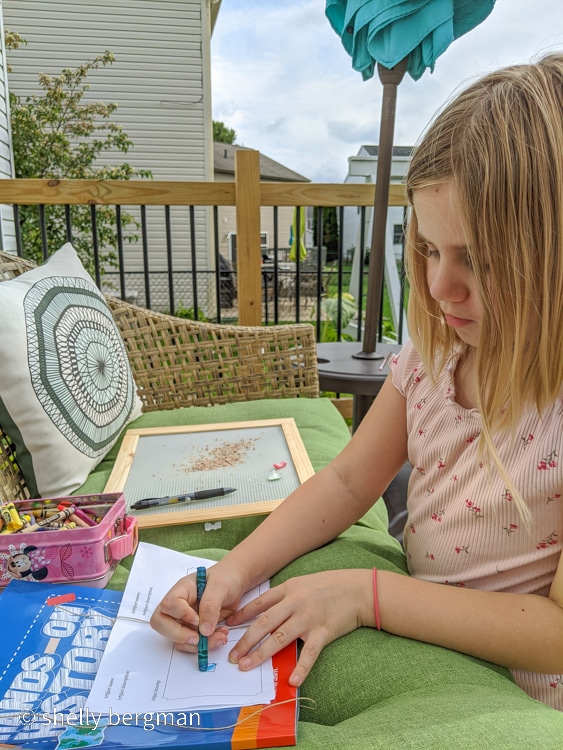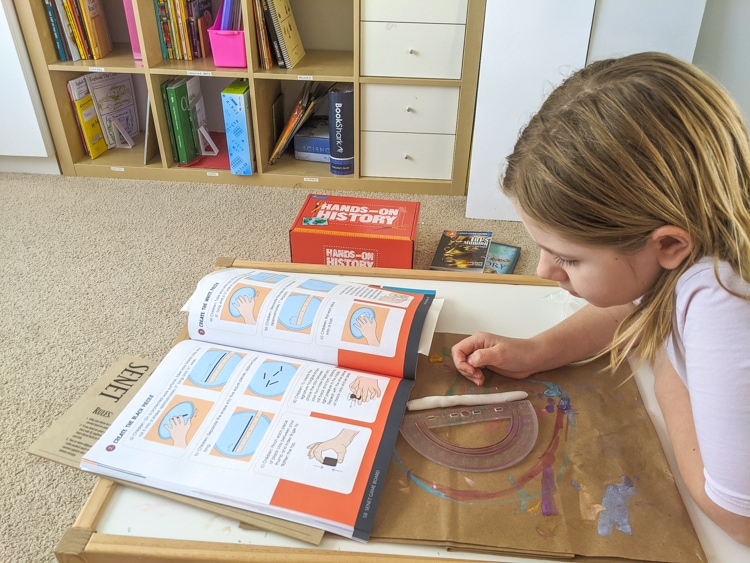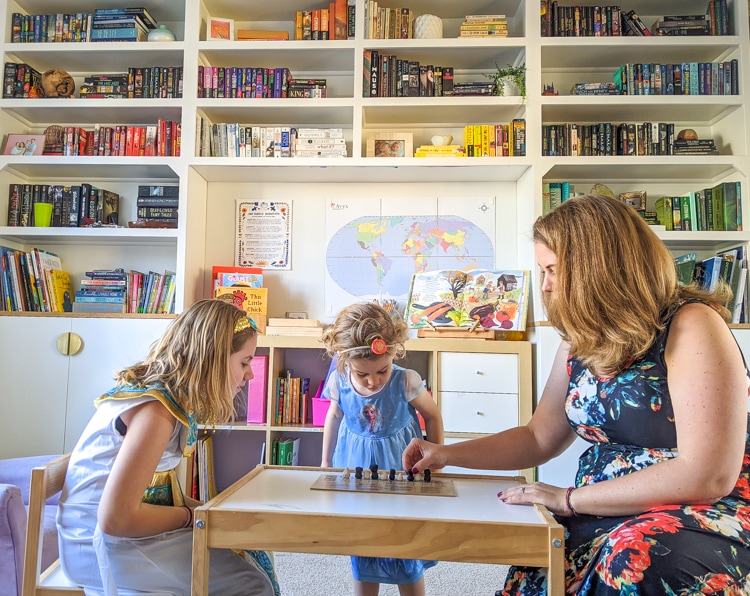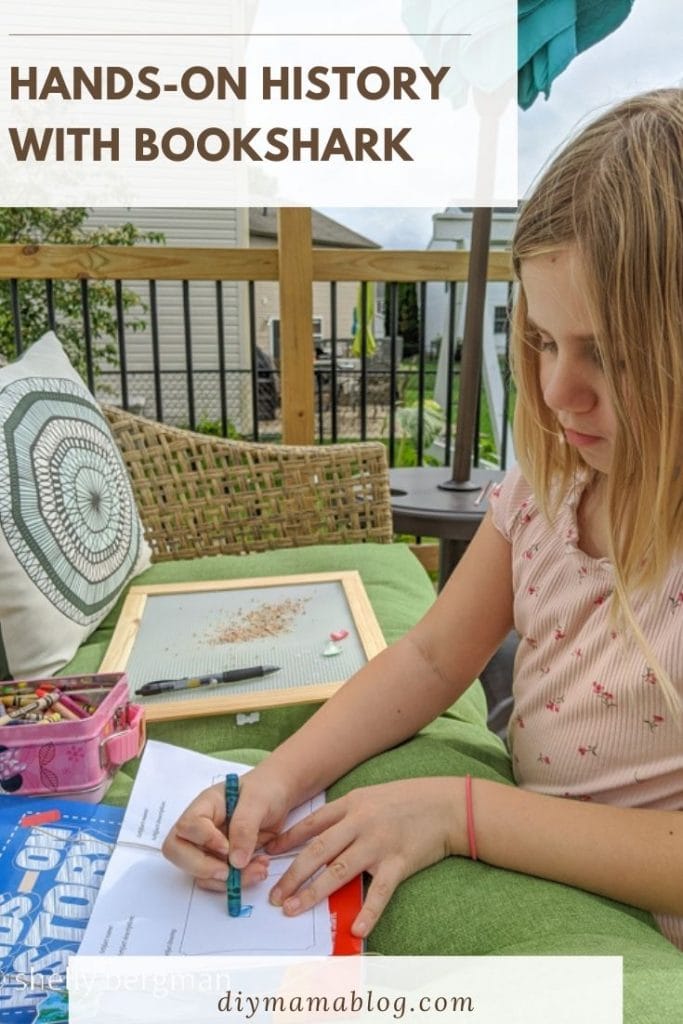The Best Curriculum for History at Home This post is sponsored by BookShark. I am a BookShark partner and a portion of our curriculum was provided by them. As always, I only work with companies that I have previously used as a product. We used and loved BookShark when we homeschooled for Pre-K and are very happy with their 1st-grade curriculum.
We’re on week 14 of our homeschool year for first grade (level B). We’ve found a really good routine and feeling happy about what we’ve learned so far. The Holiday break is right around the corner and I think we’ll miss doing school!
Because it took me a few lessons to figure out how to use Hands-On History well, I wanted to share what’s inside the box, why we like it, and when to use the box with your lessons.

What’s Inside
The Hands-On History is an optional hands-on activity to help reinforce and document your students’ World History I studies.
- Project supplies–except for a few household items such as scissors, stapler, markers, etc.
- Instruction booklet–full-color, 92-page guide includes directions– with illustrations–for each step in the process.
We love that everything is in a neat box organized in bags by their lesson. It’s easy to find what materials we need for each craft. The beginning of each lesson gives a little intro as to how the craft relates to the lesson you’re learning in history (which I read to my daughter). My daughter is able to read the simple instructions within the booklet that are written and have photos to show each step.
The projects included:
- Archaeology Set
- Chinese Dragon Puppet
- Clay Cylinder Seal
- Grecian Vase
- Laurel Leaf Wreath
- Miniature Yurt
- Roman Chariot
- Senet Board Game
- Trojan Horse

Why we like it
We really enjoy that there is a hands-on approach to supplement what we’re reading in our history books. Growing up, I excelled in classes that had a hands-on approach like Conceptual Physics, Chemistry, and Geometry. If I could physically see what I was learning, I was a much more interested and engaged student. Those are the classes that I remember today.
I knew that Sophia did not have a big interest in History. We did BookShark for PreK and she wasn’t very interested in that portion of our schooling. Knowing that I was thrilled to see that BookShark added Hands-On History as a consumable that we could add into our curriculum. We’ve both really enjoyed each time there has been a lesson that uses the crafts. It’s what we look forward to with each new lesson! It’s the best curriculum for history at home.

when to use it
Within the BookShark instructor’s guide, it shows which week to use the optional Hands-On History craft. However, doesn’t give a specific date, giving you flexibility to build it in where it fits for your week. What I learned was to read ahead a bit that week to see which day the book mentions what we’re building in our craft.
For example, when I saw we were going to be building a Senet game during our Ancient Egypt lesson, I looked through the books assigned for that week to see which day the book talked about the game before introducing the craft. That way, we have a base for what we’ll be creating.
I hope these three tips give you an idea of what’s inside Hands-On History and why you should add it to your curriculum. Especially if your child, or you, aren’t as engaged in History, it’s an awesome resource to become interested in this subject. Learn more about Hands-On History on the BookShark website.
Posts related to The Best Curriculum for History at Home| Hands-on History with BookShark
Preparing for homeschool lessons
Pin it for later

Leave a Reply